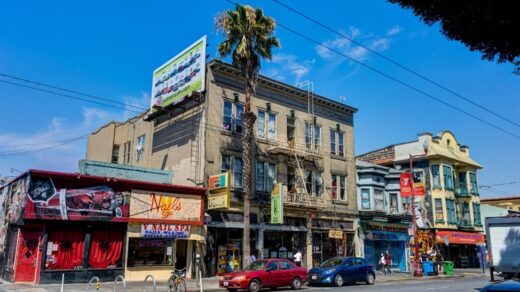
In the evolving landscape of real estate development, adaptive reuse has emerged as a dynamic solution that both preserves the historical essence of older buildings and meets the modern needs of urban populations. This approach, which involves repurposing existing structures for new uses, is gaining traction across cities worldwide as developers seek to balance sustainability, cost-efficiency, and creativity. In an era where sustainability is key, adaptive reuse offers developers a chance to reinvigorate underused spaces while reducing waste and conserving resources. David Shulick will explore the growing trend of adaptive reuse in real estate development, its benefits, challenges, and real-world examples that highlight its transformative potential.
Understanding Adaptive Reuse in Real Estate
Adaptive reuse refers to the process of repurposing old or obsolete buildings for new functions. Instead of demolishing a structure and starting from scratch, developers work with the existing building, retaining its core elements and integrating modern design and functionality. This method is particularly popular in urban areas where land is limited, and historical preservation is valued.
For instance, a former factory might be converted into loft apartments, or an old school building could be transformed into a community center or office space. These conversions maintain the structure’s integrity while allowing for contemporary use, breathing new life into buildings that might otherwise stand vacant or face demolition.
Benefits of Adaptive Reuse
1. Sustainability
One of the most compelling reasons developers choose adaptive reuse is its sustainability benefits. By reusing existing materials and reducing the need for new construction, developers can significantly lower the carbon footprint of a project. Demolition and new construction contribute heavily to landfill waste and consume vast amounts of energy and raw materials. Adaptive reuse minimizes waste and reduces the environmental impact of construction.
Moreover, adaptive reuse projects often involve upgrading old buildings with energy-efficient systems, such as HVAC, lighting, and insulation. These updates not only reduce the building’s environmental footprint but also result in long-term cost savings for property owners and tenants.
2. Cost-Effectiveness
In many cases, adaptive reuse can be more cost-effective than new construction. Demolition and removal of debris are expensive and time-consuming, whereas working with an existing structure can often expedite the construction timeline. Although older buildings may require substantial renovations to meet modern building codes and functionality requirements, the costs of materials and labor are often less than those associated with a new build.
Additionally, some cities offer tax incentives or grants for developers undertaking adaptive reuse projects, particularly when the building is of historical significance. These financial incentives can make adaptive reuse projects even more attractive compared to starting from scratch.
3. Preservation of Historical and Cultural Value
Many older buildings hold historical or cultural significance within their communities. Adaptive reuse allows developers to preserve these valuable structures, maintaining a link to the past while repurposing the space for future generations. By retaining the character and architectural features of a building, developers can create unique spaces that appeal to modern users without erasing the past.
Cities and communities often rally behind projects that maintain historical integrity, and this can build goodwill for developers. Historical preservation not only enriches the aesthetic value of a community but also contributes to a city’s cultural narrative.
4. Revitalization of Urban Areas
In many cases, adaptive reuse projects occur in parts of cities that have fallen into disrepair or have been neglected for years. By repurposing old buildings, developers can contribute to the revitalization of entire neighborhoods. A well-executed adaptive reuse project can spark further development, attracting new businesses, residents, and visitors, which can have a positive ripple effect on the local economy.
These projects are often catalysts for broader urban regeneration efforts, helping to transform rundown areas into vibrant, modern districts that reflect the community’s growth and changing needs.
Challenges of Adaptive Reuse
While adaptive reuse offers many benefits, it also presents unique challenges that developers must navigate.
1. Zoning and Building Codes
Older buildings may not comply with current zoning regulations or building codes, making it necessary for developers to work closely with local governments and regulatory bodies to secure the necessary permits and approvals. Retrofitting buildings to meet modern safety standards, such as seismic reinforcement or accessibility upgrades, can be costly and time-consuming.
2. Structural Limitations
Not all buildings are suitable candidates for adaptive reuse. Some structures may have significant damage or foundational issues that make renovation difficult or impractical. In other cases, the layout or design of a building may not lend itself to modern uses, requiring substantial alterations that undermine the cost-effectiveness of the project.
3. Balancing Preservation and Innovation
Striking a balance between preserving the historical or architectural integrity of a building and incorporating modern amenities can be tricky. Developers must often make difficult decisions about which elements of the original structure to retain and which to modify. Maintaining the building’s unique character while ensuring it meets modern functionality standards is key to a successful adaptive reuse project.
Notable Examples of Adaptive Reuse
Several high-profile adaptive reuse projects have demonstrated the potential for transforming old spaces into thriving modern developments.
- The High Line in New York City One of the most well-known adaptive reuse projects, The High Line, transformed an abandoned elevated railway line into a public park and walking trail. The project preserved the original structure while creating a unique urban green space that attracts millions of visitors each year. It has also spurred significant economic development in the surrounding area.
- The Tate Modern in London The Tate Modern art museum in London is housed in the former Bankside Power Station. The industrial architecture of the building was preserved and repurposed to create one of the most renowned modern art museums in the world. The adaptive reuse of the building has been widely praised for maintaining the historical integrity of the structure while serving a new, culturally significant purpose.
- The Brewery Blocks in Portland, Oregon Portland’s Brewery Blocks, a former brewery complex, were transformed into a mixed-use development with retail, office, and residential spaces. The project revitalized a once-declining part of the city and preserved the historical essence of the original buildings.
Adaptive reuse is an innovative and sustainable approach to real estate development that breathes new life into old structures, preserves cultural heritage, and revitalizes urban areas. While challenges such as zoning issues, building codes, and structural limitations exist, the benefits of sustainability, cost-efficiency, and historical preservation make adaptive reuse a compelling option for developers. As cities continue to grow and evolve, adaptive reuse will undoubtedly play a key role in shaping the future of urban landscapes, transforming old spaces into modern, functional developments.



